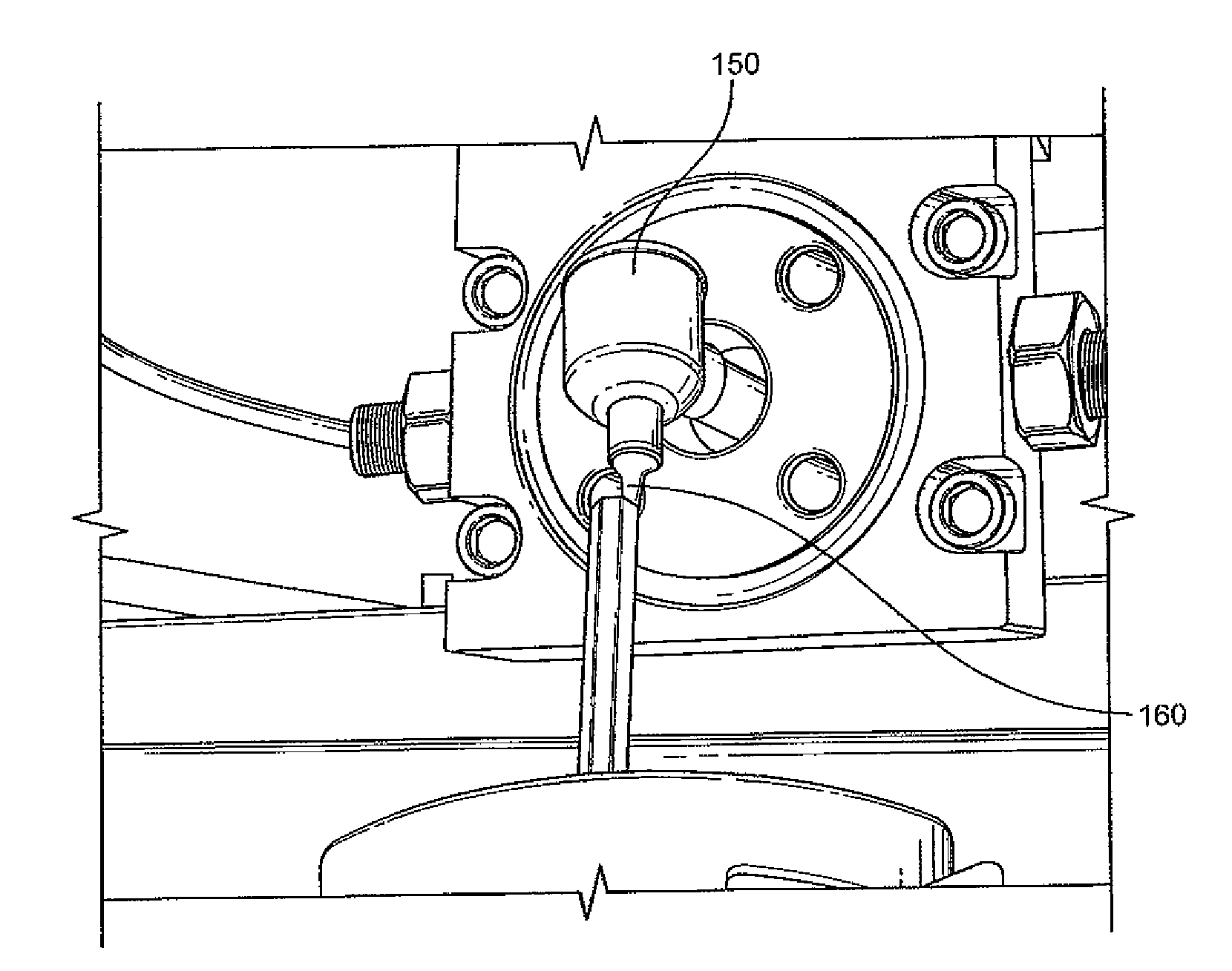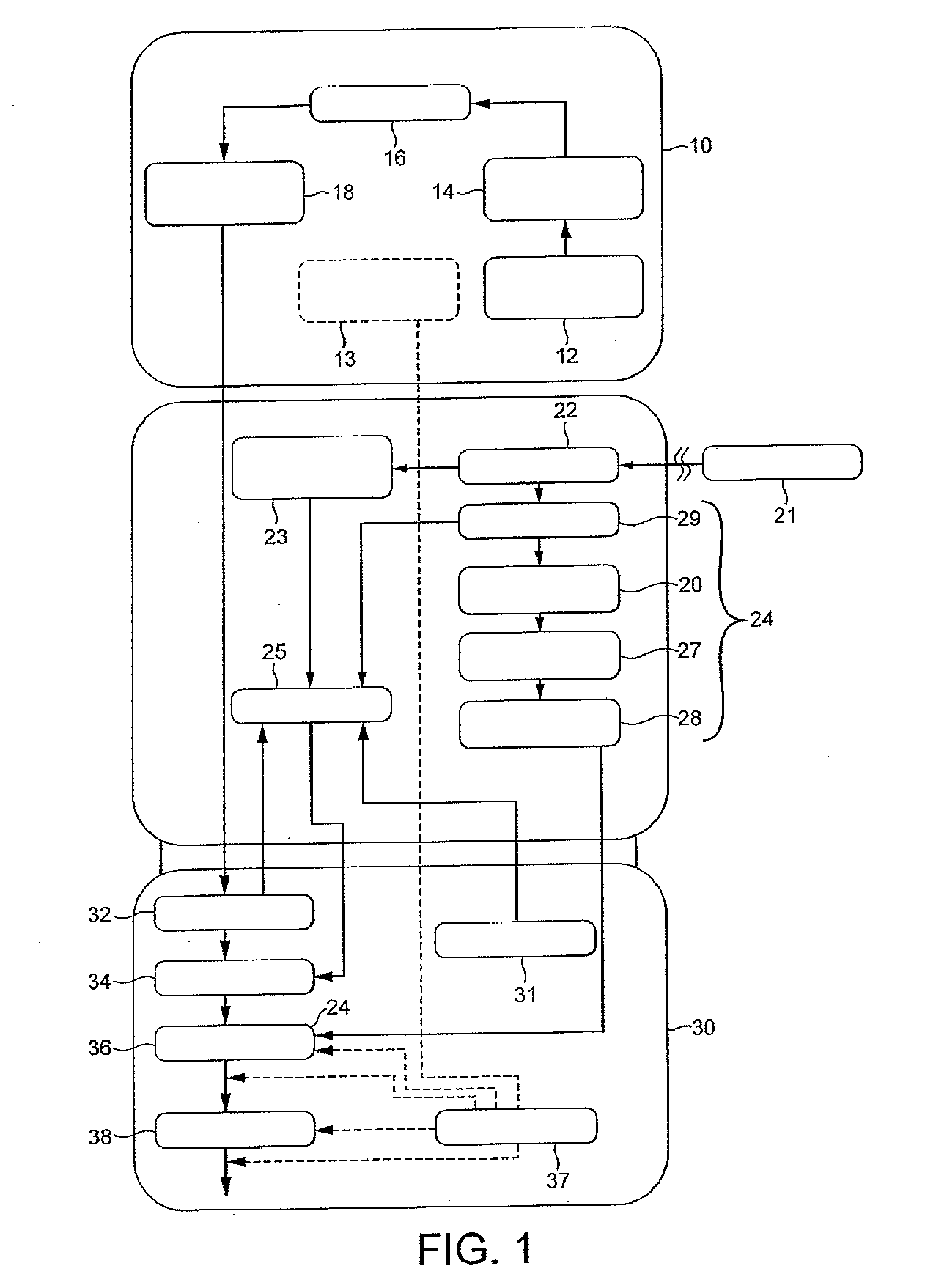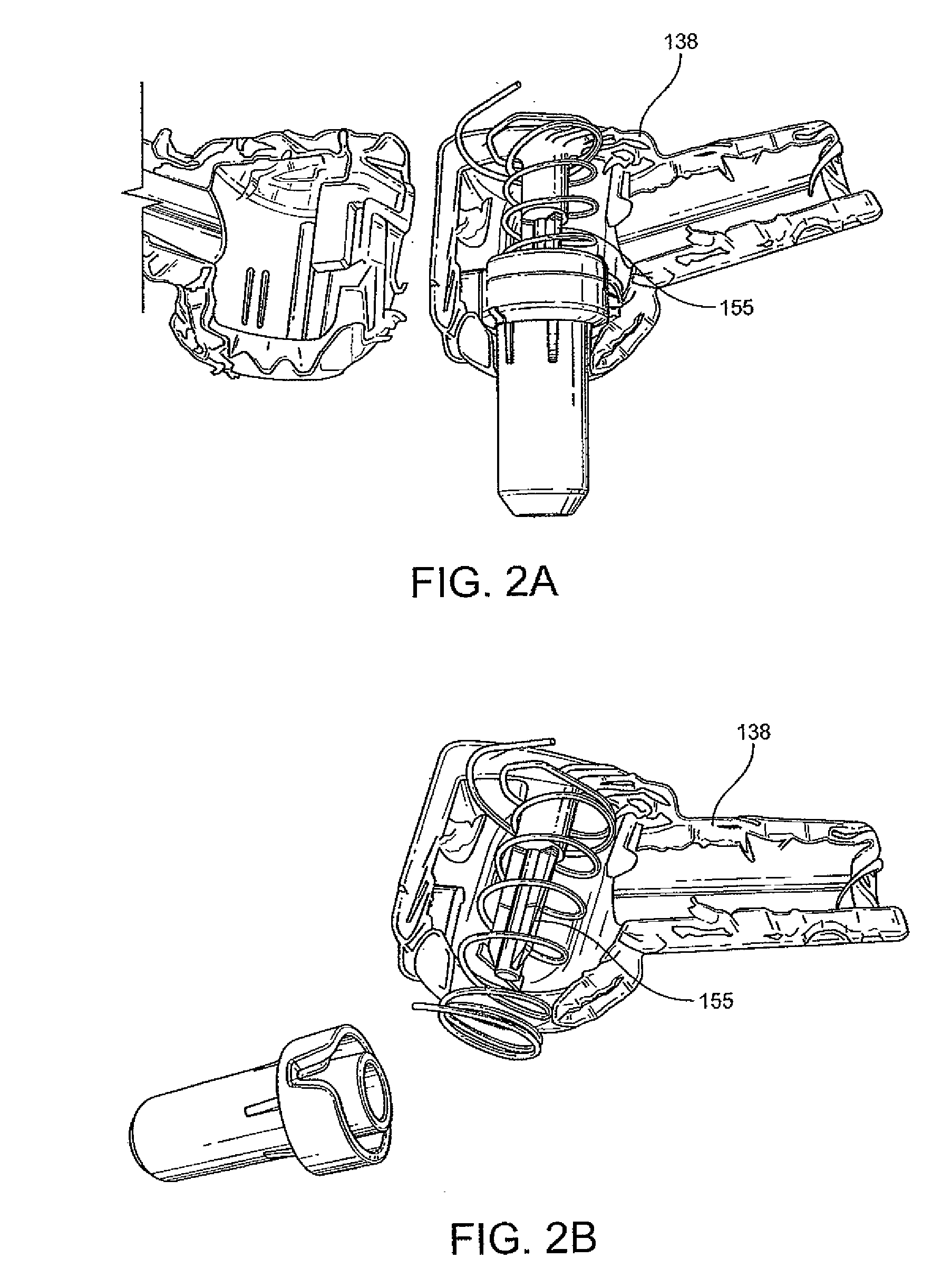Active gases and treatment methods
a technology applied in the field of active gases and treatment methods, to achieve the effect of optimizing the population of ionic species
- Summary
- Abstract
- Description
- Claims
- Application Information
AI Technical Summary
Benefits of technology
Problems solved by technology
Method used
Image
Examples
example 1
[0106]Referring to FIG. 4, in this example the emitting excited species were counted by the optical emission spectrometer when the apparatus in FIG. 18 was operated with (a) 5000 ppm Ar / He; (b) helium (comparative); (c) 10 ppm H2O / He (comparative); (d) 250 ppm H2O / He (comparative); and (e) 500 ppm H2O / He (comparative). The emission spectra were recorded at a distance of 2 mm from the plume exit. The flow rate in all cases is 0.5 L / min. In short, a high concentration of singlet oxygen atoms (777 nm) were detected in the helium plume by the emission spectrometer. However, this was almost eliminated by the inclusion of argon. It is believed that exposure of the plume to the atmosphere reduced the concentration of singlet oxygen atoms in the helium plume. As the water vapour concentration increases it can be seen that the singlet oxygen atom intensity peak significantly reduces. It can however also be seen that the excited OH intensity peak (308 nm) is also significantly reduced as the ...
example 2
[0107]In this example the emitting excited species were counted by the optical emission spectrum when the apparatus shown in FIG. 18 was operated with (a) a gas mixture of 5000 ppm Ar / He after being exposed to deliberately added water vapour within the plasma generator; and (b) a gas mixture of 5000 ppm Ar / He after exposing the plume to water vapour. Referring to FIGS. 5 and 6, the graphs illustrate the effect on the OH peak intensity at 308 nm of the resulting plumes with respect to water concentration (ppm).
[0108]It can be seen from FIG. 5 that there is no simple linear relationship between the population of emitted excited state species in the plume and the concentration of water vapour that the plasma has been exposed to. We attribute these results partly to a tendency we have found for the additive gas to quench the non-thermal plasma in the plasma generator. Once the maximum is reached, the plasma-quenching effect reduces the total number of ions and excited state species pres...
example 3
[0112]Referring to FIGS. 7, 8 and 9, in this example the excited emitting species were counted by the optical emission spectrometer when the apparatus in FIG. 18 was operated at different flow rates using a gas mixture of 5000 ppm Ar / He.
[0113]Referring to FIG. 7, the plume was exposed to water vapour concentrations of 125 ppm, 250 ppm and 375 ppm. The experiments were carried out at two different flow rates (2 L / min and 1 L / min). The results show that the OH peak intensity was higher at a lower flow rate of 1 L / min than at a flow rate of 2 L / min.
[0114]FIG. 8 illustrates the effect of varying the flow rate on the resulting OH peak intensity of a gas mixture of 5000 ppm argon in helium. It can be seen from the peaks that varying the flow rate has only a modest effect on the excited OH concentration.
[0115]In contrast, FIG. 9 illustrates the effect of varying the flow rate on the resulting OH concentration of a gas mixture of 5000 ppm argon / helium when the plume has been exposed to 330 ...
PUM
 Login to View More
Login to View More Abstract
Description
Claims
Application Information
 Login to View More
Login to View More - R&D
- Intellectual Property
- Life Sciences
- Materials
- Tech Scout
- Unparalleled Data Quality
- Higher Quality Content
- 60% Fewer Hallucinations
Browse by: Latest US Patents, China's latest patents, Technical Efficacy Thesaurus, Application Domain, Technology Topic, Popular Technical Reports.
© 2025 PatSnap. All rights reserved.Legal|Privacy policy|Modern Slavery Act Transparency Statement|Sitemap|About US| Contact US: help@patsnap.com



